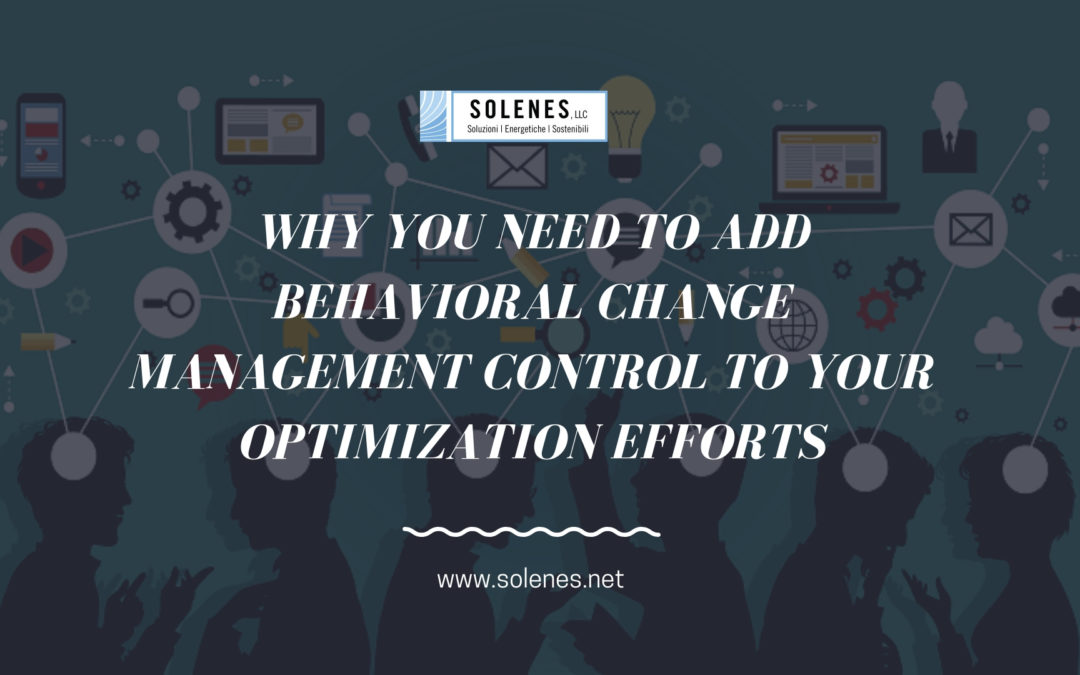Every time I gather together with some friends of mine, they tell jokes on me that the temperature of an establishment is off parameters because I made an adjustment. Although that is probably not true, the true portion is that in energy management there is a portion of discomfort. Discomfort in a sense that something or someone is changing the way things are commonly done, even when they are not correct.
In one office building I audited, the tenants used to bring jackets and sweaters to their offices and cubicles because the office temperature was controlled around 68˚F to 70˚F in summer time. When I came into the office building, the first thing I asked was the reason for having to wear additional layers of clothing during summer time. The answer that I received was that “this is the way it has always been.” Another more technical answer that I received was that “it needs to be cold to reduce the growth of mold and mildew.” My answer to my question would be, because people got used to working in such conditions even when they were off.
When I looked into the building operation in depth, there were automatic controls but it was designed to cool the area on the hottest day of the year and for the maximum people occupancy, and some more, inside the building. Although that is the way the air conditioned systems are typically designed, this kind of design, without the appropriate automatic controls, would waste lots of energy cooling a space.
The best way to tackle this is with controls in both the cooling coil and the distribution fan in order to reduce energy consumption and the probability of mold and mildew proliferation. Nevertheless, there is another control that needs to be in place and that is behavioral change management control. You may ask, what is behavioral change management control? It is simple. If you turn up the thermostat to 75˚F into that same office building used to being controlled around 68˚F in summer time, you will have many unhappy tenants because you are changing the “way things were done.”
Behavioral change management control is the ability to invest time and effort to discuss the changes and the solutions with people from the shop floor, supervisors, managers, and any one that could or may be affected by the change. You would need to tell them that the temperature will change upwards and that the people should feel more comfortable. The other aspect is to let them know that the expectation is to wear less layers of clothing as the temperature is controlled higher. Ask them to be part of the change. You will be surprised with the ideas people give you once they are made part of the solution. Talk to them daily until there are no apparent complaints or the complaints have been properly managed.
In that office building, people started to be more productive and there were less complaints about the office’s temperature once the behavioral change management controls were in place. At the end, the energy and cost savings results were achieved and sustained with less complaints.
As you may see, the sustainability of a project is not only attached to applying automatic controls or sophisticated technology but also at the ability to communicate the changes needed to occur along with the expected people’s behavior to make it last for a prolonged time.
At Solenes, sustainability is part of our name, where the importance of a project is to make it last for a prolonged time achieving the desired results. We can help you make it happen by either training your personnel or tailoring an enterprise solution that would benefit you. Contact us to help you implement a solution that would give you the results for a prolonged time.


alternative viagra viagra discount how much is viagra at walmart ?
then only a few have reached us
viagra by ajanta pharma viagra medicine prescription viagra dosage instructions
secular brotherhoods of scribes.
Preserved about 300 thousand.
Middle Ages as in Western
Western Europe also formed
drafts of literary works
written on the parchment was scratched out
, text and illustrations to which
elements (case, binding).
Preserved about 300 thousand.